
| Plants are fundamentally important as primary producers; most heterotrophs ultimately depend on them. So animals feeding on plants is a ubiquitous process, which can be observed in many forms. Small animals may live inside plants, creating what we notice as mines. Some animals living inside plants interfere with regular development, inducing the plant to develop galls. On this page, I show a few photos of raw, unadorned herbivory: the consumption of plants by animals. Obviously this is to the disadvantage of the plant and most plants therefore evolved various means to discourage herbivores. |
| Agalis urticae feeding on Urticae dioica |
| Authority | : | (Linnaeus, 1758) |
| Nederlands | : | Kleine vos |
| English | : | Small Tortoiseshell |
| Deutsch | : | Kleine Fuchs |
| Norsk | : | Neslesommerfugl |
| Svenska | : | Nässelfjäril |
| Français | : | Petite Tortue |
| Español | : | ortiguera |
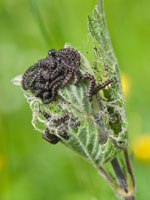 |
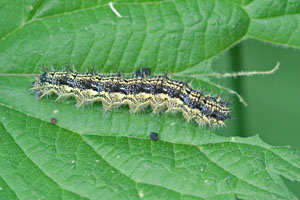 |
| Amstelveen, the Netherlands; 25 May & 11 June 2013. | |
The stinging nettle, Urtica dioica, has many hollow stinging hairs on the leaves and stems, which act to inject various chemicals that produce a stinging sensation when contacted by humans and other animals. The caterpillar of the small tortoiseshell obviously is impervious to this protective device. |
|
Aproceros leucopoda feeding on Ulmus spec. |
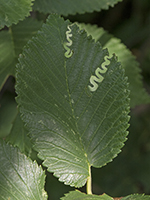 |
| Amsterdam, the Netherlands; 21 June 2017. |
Sometimes the damage done to the leaves allow for easy identification of the herbivore. The beautiful zigzag pattern in the leave of Ulmus spec. is caused by the tiny larvae of the Symphytan wasp, Aproceros leucopoda. |
|
Phlogophora meticulosa feeding on Asplenium scolopendrium |
| Authority | : | (Linnaeus, 1758) |
| Nederlands | : | agaatvlinder |
| Deutsch | : | Achateule |
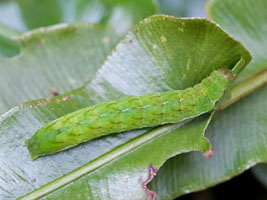 |
| Amstelveen, the Netherland; 16 March 2010. |
Ferns generally suffer little from herbivory, though morphologically obvious protective devices are lacking. It can be expected that most ferns are rife with secondary metabolites, biochemicals that interfere with the metabolism of herbivores. |
| Hyles tithymali feeding on Euphorbia lamarckii |
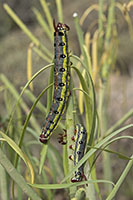 |
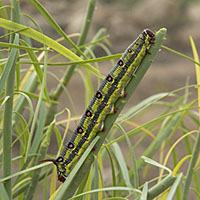 |
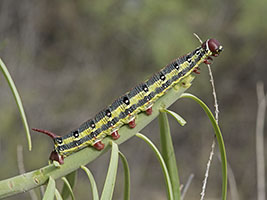 |
| Barranco del Rio (Tenerife), Spain; 25 December 2015. | ||
Plants of the large genus Euphorbia are well protected by a milky-white juice (also called 'latex'), irritating the skin and causing painful inflammations to exposed mucosa. As always, some animals evolved to capitalize on this plentiful resource, such as the caterpillars of a few hawkmoths. |
| Yponomeuta spec. feeding on Euonymus europaeus |
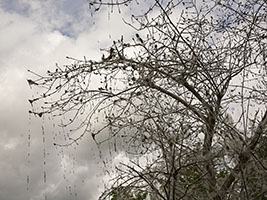 |
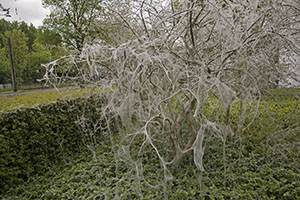 |
 |
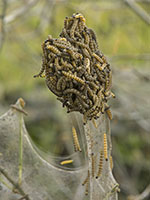 |
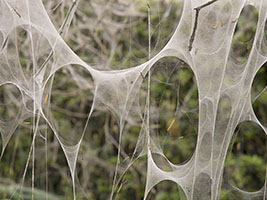 |
| Amstelveen, the Netherlands; 16 May 2016. | ||
The foliage of the shrub Euonymus europaeus apparently is no match for the insatiable appetite of millions of tiny caterpillars of the moth Yponomeuta spec. After the shrub has been defoliated and the caterpillars have pupated, the shrub simply grows new leaves and it will survive with a temporary setback only. |